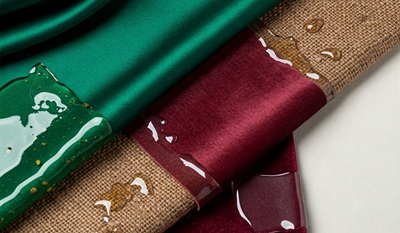The textile sector is a constantly developing and innovative field where a wide range of products, from apparel and home textiles to technical textiles and medical textiles, are manufactured. Chemical substances used in this sector significantly affect the properties and performance of the products. Resins are also important chemical substances frequently used in the textile industry that add value to products.
What are Resins?
Resins are generally high molecular weight polymers obtained from natural or synthetic sources. While natural resins are derived from plant extracts or insect secretions, synthetic resins are produced from petrochemical products or other chemical substances. Resins are used for various purposes in the textile sector and impart various properties to products.
Types of Resins Used in the Textile Sector
Resins used in the textile sector are divided into different categories according to their chemical structures and properties. Some commonly used resin types include:
- Urea-Formaldehyde Resins: These resins are used to provide textile products with wrinkle resistance, stiffness, and durability. They are particularly preferred for products like shirts, trousers, and tablecloths.
- Melamine-Formaldehyde Resins: Similar in properties to urea-formaldehyde resins, these resins have higher wash and abrasion resistance. They are used in more durable products such as kitchen aprons, curtain fabrics, and upholstery fabrics.
- Acrylic Resins: These resins are used to impart softness, flexibility, and water repellency to textile products. They are especially preferred for products like sportswear, outerwear, and carpets.
- Polyester Resins: These resins are used to provide textile products with durability, gloss, and color vibrancy. They are frequently used in blended fabrics, for example, in polyester-cotton blends.
- Silicone Resins: These resins are used to give textile products softness, water repellency, and stain resistance properties. They are particularly preferred for underwear, towels, and technical textiles.
Applications of Resins in the Textile Sector
Resins are used for different purposes in the textile sector. Some common application areas are:
- Wrinkle Resistance: Resins provide textile products with wrinkle resistance, reducing the need for ironing and ensuring products look neater.
- Durability: Resins increase the resistance of textile products to wear, abrasion, and tearing.
- Softness: Resins impart softness and a pleasant feel to textile products.
- Water Repellency: Resins provide textile products with water repellency, preventing liquids from being absorbed by the fabric.
- Stain Resistance: Resins give textile products stain resistance, allowing stains to be cleaned easily.
- Color Fixation: Resins help dyes used in textile products to penetrate the fabric better and ensure colors are more permanent.
Resin Application Methods
Resins can be applied to textile products using different methods. Some common application methods include:
- Dipping Method (Padding): The textile product is immersed in the resin solution and then squeezed to remove excess resin.
- Spraying Method: The resin solution is applied by spraying it onto the textile product.
- Coating Method: The resin is applied as a thin layer coating onto the textile product.
Advantages and Disadvantages of Resins
There are some advantages and disadvantages to using resins in the textile sector.
Advantages:
- Imparts various properties to textile products.
- Increases the performance and value of products.
- Can be easily applied using different application methods.
Disadvantages:
- Some resins may contain formaldehyde, which can lead to health problems.
- Resin application can increase the cost of textile products.
- Some resins can reduce the breathability of textile products.
Resins are important chemical substances widely used in the textile sector that add value to products. Different types of resins are used to impart various properties to textile products. The choice of resin and application method should be determined according to the product's purpose and desired characteristics.





